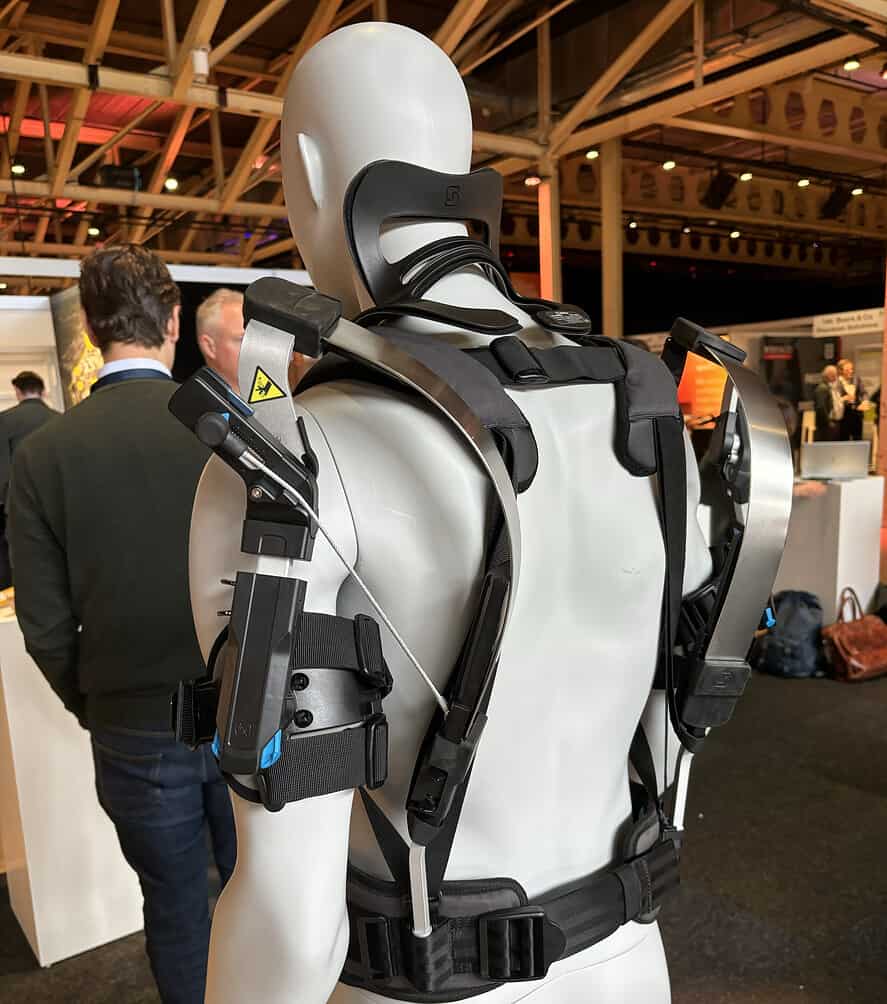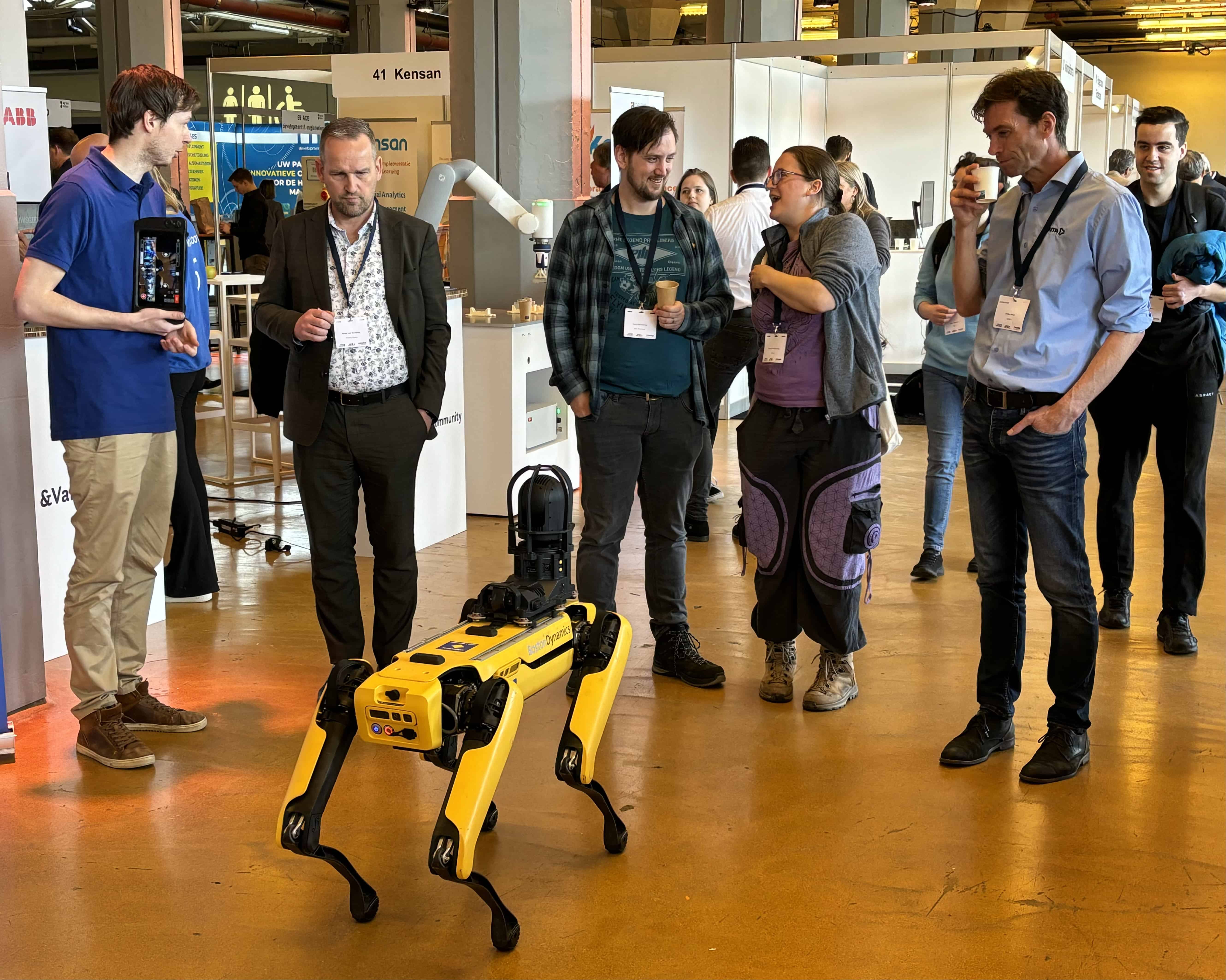
With an expanded line-up and a vibrant number of visitors, the ZIE 2024 brought together South Holland’s most brilliant minds to discuss the future of technology in the manufacturing industry. The event’s second edition, a partnership by Mikrocentrum and Hi Delta, opened the doors of the Van Nelle Fabriek in Rotterdam to a big gathering of tech companies and sustainability enthusiasts.
This year’s central theme was “new technology for the manufacturing industry,” and companies of all sizes and scientific branches, such as space travel, quantum tech, and AI, showcased their most recent projects in more than 100 stands.
The event also featured a star line-up of public speakers, including CEOs and educational leaders from different fields. They displayed their most recent contributions to the sector and debated the challenges of applying tech in the Dutch manufacturing business. Meanwhile, in the event room, many students and visitors had the chance to engage with various innovations.
According to Hi Delta director Martin van Gogh, the event’s scale increased compared to the previous edition. “We have more high-tech entrepreneurs, which is very interesting to me, and we strive for something around 1,200 visitors today. So, we’re really stepping up,” said van Gogh. As the director stated, the event’s most important aspect is providing a platform for “cross-sectoral thinking” and exploring ways to connect companies seeking new technologies and collaboration opportunities.
George Borst, a business development leader at Focus On, celebrated the occasion and commented on his favorite aspect of the event. “The most important thing is to meet people, talk about what they are doing in the industry and the innovations they are producing, and connect to see if we can work together. That means there are more possibilities for us to succeed here in the future,” said Borst.
Despite the current success, the event’s organizers have even bigger aspirations for the next couple of years. “In the near future, I think that we’ll see more and more high-tech innovations visible here, not only in manufacturing but also in robotics, human-machine interface, digital twins in design, 3D printing, and others,” Van Gogh aimed.
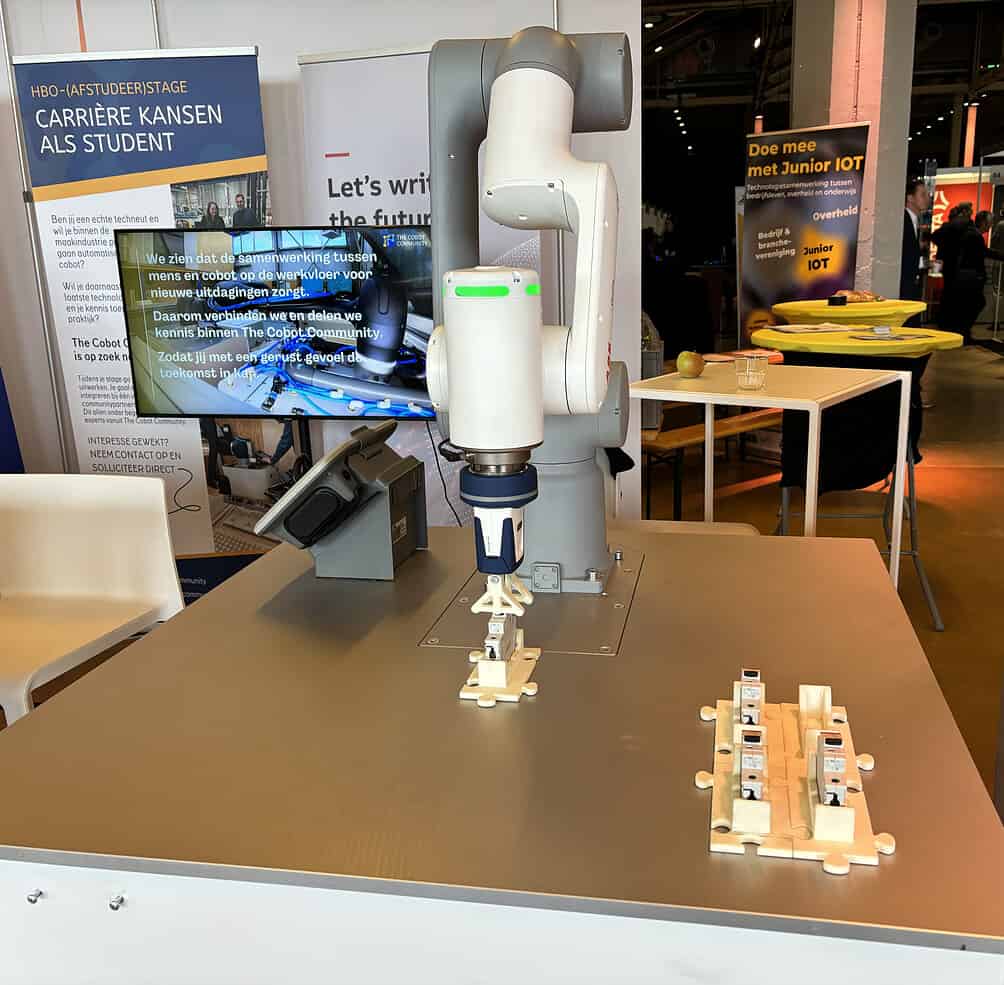
To make yourself visible
As the event’s trademark, ZIE 2024 allowed innovators from all over South Holland to network with varied sectors, seek funding and partnerships, and, most importantly, exhibit their initiatives to the public.
Colinda de Beer, a business developer for the Innovation Quarter, highlighted the relevance of establishing connections with local companies and tech experts to build bridges for future projects. “I think it’s important that there are many, not exclusively, but many companies here from South Holland. So, the connections we make here are easy to follow up on and work with these companies,” said de Beer.
De Beer mainly uses high tech to support the horticulture segment, as she is attempting to create a sustainable ecosystem with Robocrops. However, she emphasized the struggles for visibility at times. “With this ecosystem, it’s important to show that we need to connect the growers who buy the products from the tech developers, the students who are developing new technology, and the tech developers themselves. But nowadays, there’s a lot more going on in robotics, system engineering, and developing all kinds of AI, so we do need to connect with those companies and ask for support,” she explained.
In some other cases, participating in events like ZIE 2024 is essential, mainly to keep a project alive. One of these visionaries is Karin van Dijk from My Breath My Music Foundation, an organization that develops special instruments using technology for people with severe physical disabilities.
According to van Dijk, “When you work together, smart ideas can emerge, and we want to ensure that everyone can make music,” which is exactly why they participated in ZIE 2024.
Despite her enthusiasm, it can be challenging to be noticed. “I think it’s important that other people know our existence because if they don’t, then people with disabilities cannot make music. We can write articles, but that’s not as efficient as when people see and hear them,” said van Dijk.
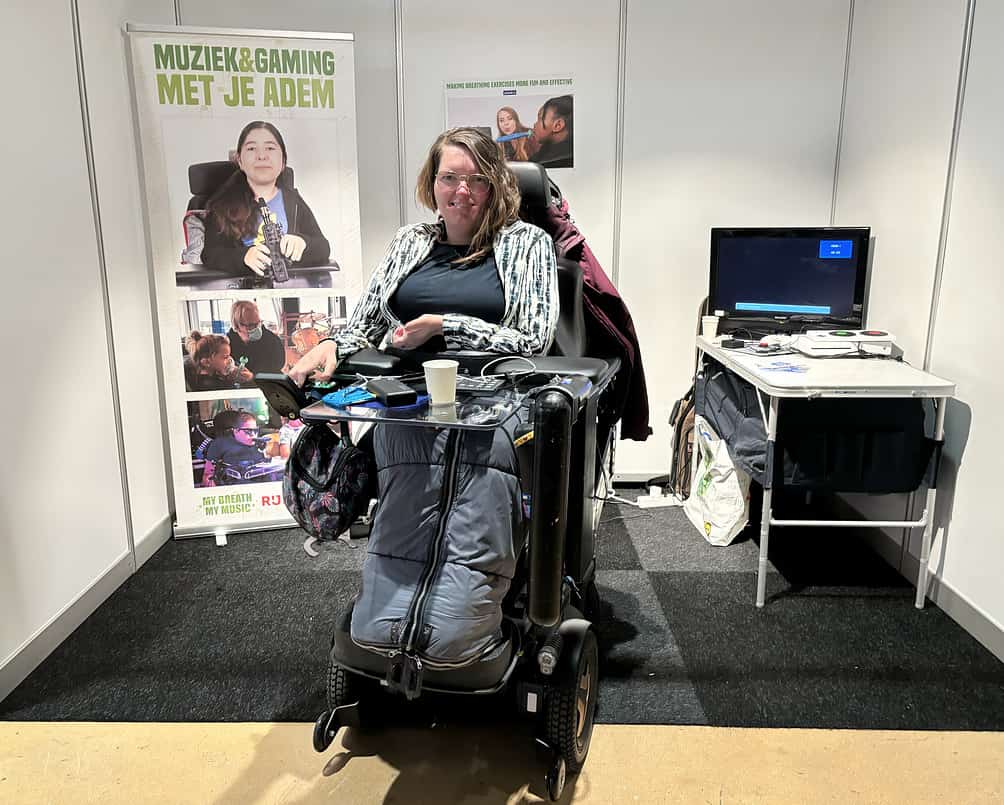
Combining “street smart” with technology
Merging the manufacturing industry’s traditional elements with modern technology is not as simple as it might seem. Erik de Jong, managing director of H2L Robotics, was one of the lecturers who introduced his company’s advancements to the audience.
They are currently working on mobile machinery that scans tulip fields to find and kill the bulbs containing the tulip-breaking virus (TBV). This virus causes a color-breaking pattern in infected plants, which could result in problems in the exporting market due to strict international regulations.
De Jong spoke of his experience working in the agricultural sector compared to the high-tech industry. “I have been working with tulip farmers and agriculture for the last five years, which is a completely different type of work. So it’s fun to be also with smart people, but smart in a very different way, street smart,” he explained.
While providing a vital piece of technology to avoid substantial revenue losses in the tulip field, De Jong insists on a collaborative approach to working with the manufacturing sector. “It really is a collaborative effort because we provide the technology to do the detection, treatment, and all this high-tech stuff, but the expertise comes from the farmers. So it’s really a collaborative effort to train the machine, as we have to incorporate their knowledge into this machine, and that’s where the real collaboration comes in,” de Jong explained.
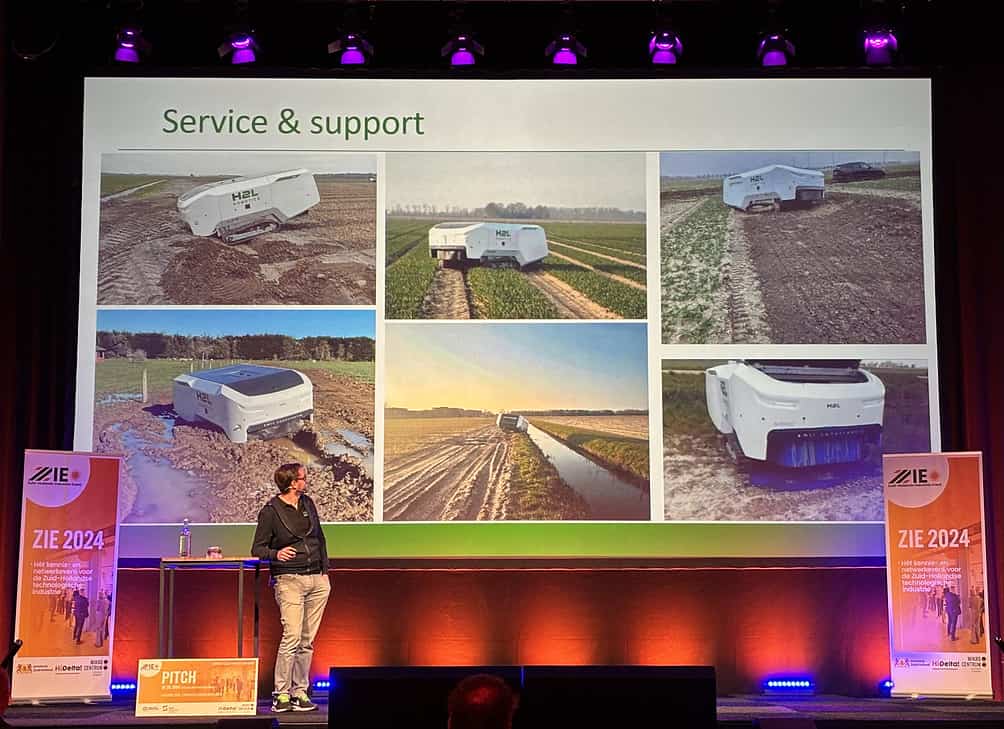
Responsibilities of the younger generations
As David Abbink, a professor at TU Delft and a speaker at the event, described, experienced innovators should emphasize this cooperative relationship with the manufacturing sector and also make it a common practice for new generations.
Abbink spoke during his lecture about the same collaborative effort of several parties to boost the tech branch of the Dutch manufacturing industry, not exclusively referring to engineers but also social scientists, experts on workflow, organizations, policymakers, and unions in a sense of “shared responsibility.”
Moreover, he pointed out how events like ZIE 2024 are vital in this sense. “I think it’s sometimes difficult when you’re in your own bubble or silo to kind of step out of it and see what else is happening. So I think this is a perfect event so that people can talk to each other and see what solutions everybody is offering and how there might be links,” Abbink stated.
While discussing the role of his students in this equation, the professor commented that they are essential, but they have to realize that they are not the only ones who will steer the innovation.
“Their future is also in more deep collaboration with the people who actually do the work around the innovations we develop. I hope they will take responsibility and consider more significant sustainability themes. What kind of world are we creating? What is the future of work?” Abbink questioned.
David’s generation also carries this responsibility, and he hopes it will be carried forward with his students and future innovators who engage in partnerships for a brighter future of technology and manufacturing in the Netherlands. “It is essential that they see it, act, and connect with people who think likewise,” he concluded.
An exoskeleton and a dream
At ZIE 2024, a practical representation of the new generation was present, with interested students walking around and young innovators participating for the first time. Bob van Rooij, a mechanical engineer at Skelex, was commanding a stand on his debut at the fair. He assisted in developing an exoskeleton that supports manual workers in the hope of avoiding serious injuries.
As a student, van Rooij was deciding between anatomical biology and mechanical engineering. Still, he managed to find a path in between with the exoskeleton as he dreams of contributing more significantly in the future. “I hope to one day upgrade this to a point where it could help people with disabilities or recover from an incident, not just as a preventive measure. My big dream is to move into the prosthesis and see if we can start returning functions to limbs that no longer work or exist,” said van Rooij.
